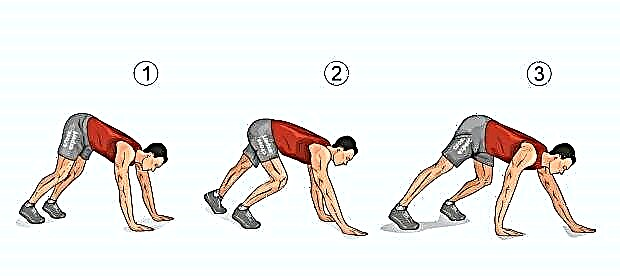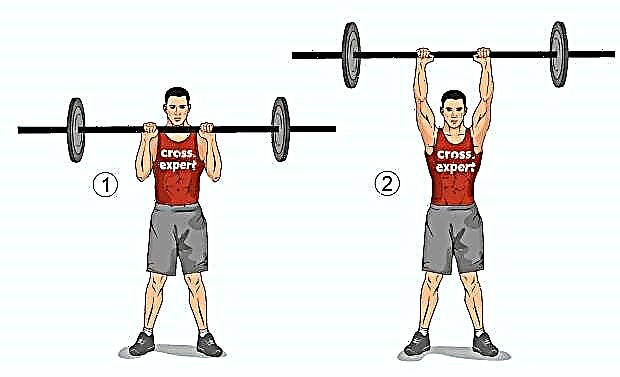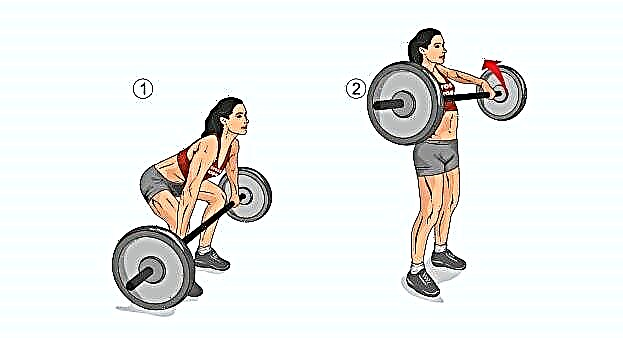Taking a barbell on the chest in a sitting position is a universal exercise in which almost all muscles are involved. The second life in the exercise was breathed in by such a popular trend as CrossFit. In crossfit, it is used with low weight for a large number of reps and with a large weight for 1-3 lifts.
Most of the load is received by the glutes, hamstrings and quadriceps. The loin, along with the above, plays an important role in the exercise.
The exercise can be classified as speed-power, technical. The technique requires a lot of attention. In the beginning, take care of staging a competent manner of execution. Break this exercise down into auxiliary ones. Jumping is best practiced with jogging, at the end of each rep, try to bounce a little. The grooming technique should be worked out with classic exercises such as push, pull and snatch. To successfully complete this exercise, you must squat with a barbell on your chest. There is a formula that many athletes adhere to, the weight with which you can sit frontally 3 times, it is quite possible to take on the chest and push.
The deadlift helps to accelerate the barbell. By practicing this movement additionally, you will not have any problems when performing the barbell sitting on the chest. In this kind of load, like taking a barbell on the chest, a lot depends on coordination. Take the time to warm up. Warm up your elbows, knees and lower back. The success of training directly depends on the preparation of the central nervous system and the musculoskeletal system for work.
Exercise technique
Let's move on to a step-by-step study of the technique of performing the barbell lifting on the chest in the sed. The exercise is difficult and traumatic, so we study it carefully!
Initial position
The starting position is as follows:
- Feet shoulder-width apart, slowly lower ourselves, look in front of us, reach out with our hands to the bar.
- The loin is arched, the arms are straight, the knees look out to the sides, the foot is placed in the direction of the knees, the shoulder covers the knees and the barbell. We start undermining at mid-thigh level.
- In this exercise we keep our hands as free as possible. If necessary, we use straps to relieve the load on the forearms.

When performing a take on the chest in the gray, we keep the bar as close to ourselves as possible, and not ourselves reaching for it. For the first workouts, we select a fairly modest weight on the bar and gradually increase the load. Many experts recommend training flexibility, stretching. With tight muscles and ligaments, the exercise will be more difficult to tolerate.
Concentrate on slow acceleration and sharp pulling under the bar. It is necessary to save energy just for getting up from the seat, without giving all the strength to acceleration. The so-called "dead center" with which you will encounter when performing should be worked out repeatedly, diligently with low weight.
The mistake of many is to let go of the barbell during its flight. You must control all the stages during execution, it is not the barbell that controls you, but you control it.
4 phases of taking on the chest
Let's break the barbell lifting into four phases, going from the opposite.
Phase 1, the bar is on your chest. We make sure that the bar does not choke you, we do squats imitation of a squat. In the squat, we leave the pelvis back, the knees go to the sides. At the lowest point, a pause with slight swaying is possible, the elbows are to the sides, and the shoulders are raised up.

Phase 2, broach. We lower the barbell on straight arms, straighten up and from this position we make a broach up (with our hands not with our back). The elbows go up, the barbell at this time is tightly pressed against the body. Reaching the chest, we make a twist with our elbows, we achieve that at the end point the bar is on the shoulders. The pelvis is constantly pulled back. Now it is possible to connect the first and second phase.

3 phase, detonation. We move to the position of the first part of the blasting, we move the body a little forward, thereby achieving an inclination, the bar is at knee level, we check ourselves, the shoulder should cover the knees, we spread our knees to the sides, and we take the pelvis back. From this position, we straighten up and connect the first and second phases.

For phase 4, it is best to put a weight on the bar. Starting position, feet shoulder-width apart, squatted down, straightened your back, took the barbell with a jerk grip, your knees looked to the sides, tightened up, gently rise up without jerking until the moment of detonation. In the fourth phase, we practice standing up. Now we connect all the phases in one movement. If there is no coach or person nearby who can point out mistakes from the outside, we look in the mirror and check ourselves at the key points that are indicated above.
In custody
Taking the barbell to the chest is an excellent exercise, training all large muscle groups, developing strength, agility. If all the conditions are met, the result will certainly be. Of course, there is a contraindication, perhaps you have a back injury, and this type of axial load will not suit you. This exercise will force you to look at muscle work and the capabilities of our body from a different angle.
Taking a barbell on the chest in a sitting position opens up a new potential of the human body. If you haven’t tried such a load yet, join the thousands who have experienced it. Diversify your training and you might find yourself.
Success in your training! Don't be afraid to learn new things! But remember that everything new is well forgotten old. Did you like the material? Share with your friends on social networks. Questions left - welcome to comments









